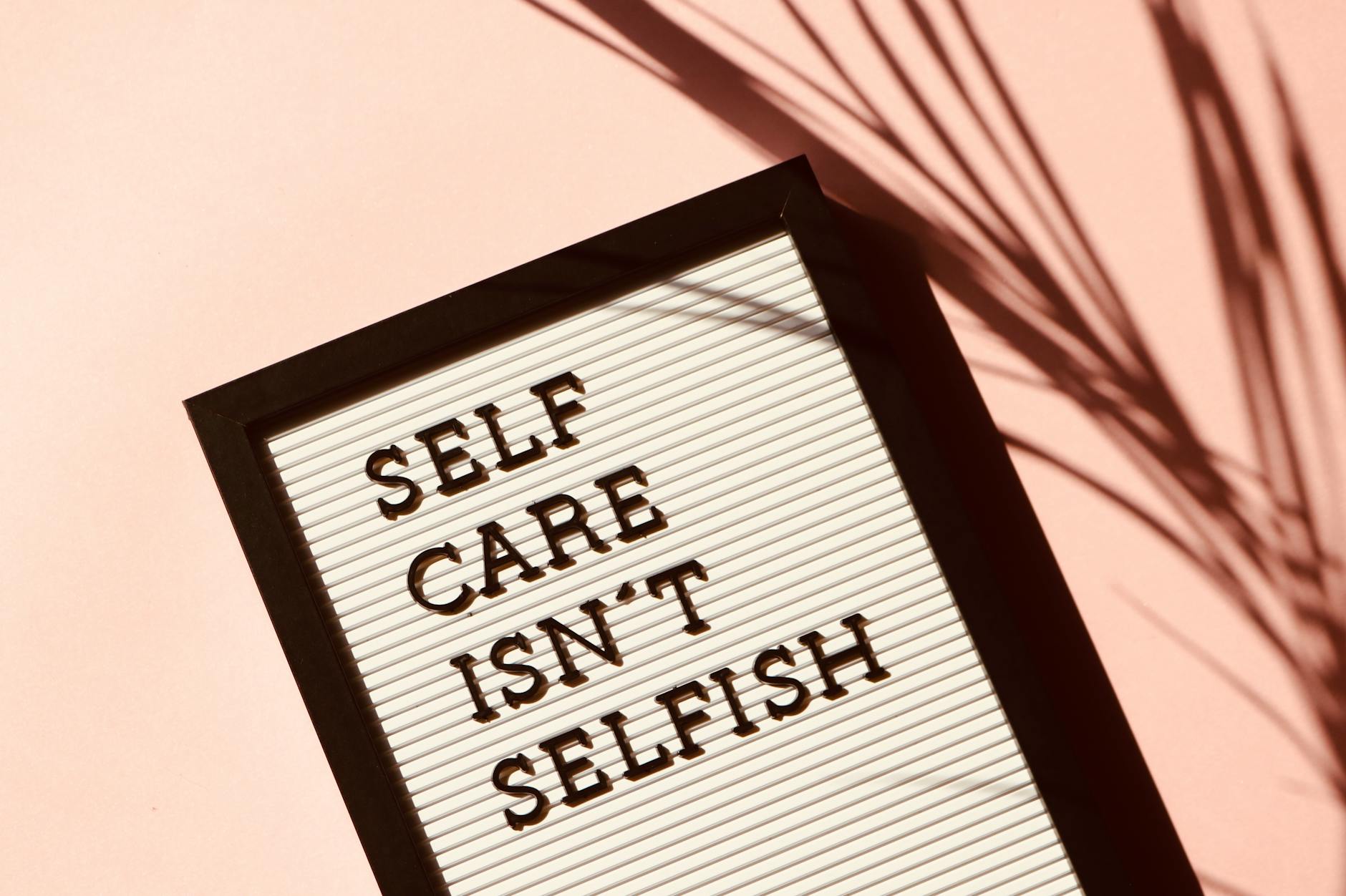
Are you feeling stuck in a rut, unsure of how to move forward in life? Personal growth isn’t just a buzzword—it’s the key to unlocking your full potential and living a more fulfilling life. 🌱
In today’s fast-paced world, it’s easy to lose sight of our own development amidst the chaos of daily responsibilities. But what if you could discover a wealth of growth ideas tailored specifically to you? Imagine the possibilities that would open up if you had a roadmap to guide your personal evolution.
This comprehensive guide will take you on a journey of self-discovery and improvement. From understanding the core concepts of personal growth to setting meaningful goals and cultivating positive habits, we’ll explore nine essential areas that will help you become the best version of yourself. Get ready to expand your comfort zone, nurture relationships, and maintain your physical and mental well-being—all while measuring your progress and adjusting course as needed. Are you ready to embark on this transformative adventure?
Understanding Personal Growth

Defining personal development
Personal development is the ongoing process of self-improvement and growth that enables individuals to reach their full potential. It encompasses various aspects of life, including:
- Emotional intelligence
- Cognitive abilities
- Physical health
- Social skills
- Career advancement
By actively engaging in personal development, you can enhance your quality of life and achieve greater success in both personal and professional spheres.
The importance of continuous self-improvement
Continuous self-improvement is crucial for several reasons:
- Adaptability in a changing world
- Enhanced problem-solving skills
- Increased self-awareness
- Greater resilience
- Improved relationships
| Benefits of Continuous Self-Improvement | Impact on Personal Growth |
|---|---|
| Increased confidence | Boosts self-esteem |
| Enhanced decision-making | Leads to better choices |
| Expanded knowledge base | Fosters lifelong learning |
| Improved productivity | Achieves goals faster |
Identifying areas for growth
To effectively pursue personal development, it’s essential to identify specific areas for growth. Consider the following steps:
- Conduct a self-assessment
- Seek feedback from others
- Reflect on past experiences
- Analyze your strengths and weaknesses
- Explore new interests and passions
By pinpointing areas for improvement, you can focus your efforts on developing the skills and qualities that will have the most significant impact on your personal growth journey.
Now that we have a solid understanding of personal growth, let’s explore some effective self-assessment techniques to help you identify your strengths and areas for improvement.
Self-Assessment Techniques
Conducting a personal SWOT analysis
A personal SWOT analysis is a powerful self-assessment technique that helps you identify your Strengths, Weaknesses, Opportunities, and Threats. This method can provide valuable insights into your personal growth journey.
| Component | Description | Example |
|---|---|---|
| Strengths | Your positive attributes and skills | Leadership abilities, creativity |
| Weaknesses | Areas that need improvement | Public speaking, time management |
| Opportunities | External factors you can leverage | New job openings, networking events |
| Threats | External challenges to your growth | Economic downturn, competition |
To conduct a personal SWOT analysis:
- List your strengths and weaknesses
- Identify external opportunities and threats
- Analyze the connections between each component
- Develop strategies to capitalize on strengths and opportunities
- Create plans to address weaknesses and mitigate threats
Using personality tests for self-discovery
Personality tests can be valuable tools for uncovering growth ideas for yourself. Popular tests include:
- Myers-Briggs Type Indicator (MBTI)
- Big Five Personality Test
- StrengthsFinder
- Enneagram
These assessments can reveal:
- Your natural tendencies and preferences
- Potential career paths that align with your personality
- Areas for personal development and growth
Seeking feedback from others
Gathering input from trusted friends, family, and colleagues can provide unique perspectives on your strengths and areas for improvement. Consider:
- Asking for specific examples of your behavior
- Requesting honest feedback on your work performance
- Discussing your personal goals with mentors
Journaling for self-reflection
Regular journaling is an effective self-assessment technique that promotes self-awareness and personal growth. Try these journaling prompts:
- What are my proudest accomplishments this week?
- What challenges did I face, and how did I overcome them?
- What new skills or knowledge do I want to acquire?
- How have my actions aligned with my values and goals?
By combining these self-assessment techniques, you’ll gain a comprehensive understanding of yourself and identify numerous growth ideas for your personal development journey.
Setting Meaningful Goals

Creating SMART objectives
When setting meaningful goals for personal growth, it’s crucial to use the SMART framework. This approach ensures your objectives are:
- Specific
- Measurable
- Achievable
- Relevant
- Time-bound
Here’s a table illustrating how to transform a vague goal into a SMART objective:
| Vague Goal | SMART Objective |
|---|---|
| Improve fitness | Run a 5K race in under 30 minutes within 6 months |
By crafting SMART objectives, you create a clear roadmap for your personal development journey.
Aligning goals with personal values
To ensure your growth ideas for yourself are meaningful, they must align with your core values. Consider the following steps:
- Identify your personal values
- Reflect on how each goal relates to these values
- Adjust goals to better reflect what truly matters to you
Prioritizing growth areas
With numerous potential areas for personal development, it’s essential to prioritize. Use this list to help focus your efforts:
- Assess current skills and knowledge gaps
- Consider which areas will have the most significant impact on your life
- Evaluate the resources and time required for each goal
- Choose 2-3 key areas to focus on initially
By setting meaningful goals using these techniques, you’ll create a solid foundation for your personal growth journey. Next, we’ll explore how to develop new skills that complement your objectives.
Developing New Skills

A. Identifying valuable skills for personal growth
When it comes to developing new skills, it’s crucial to identify those that align with your personal and professional goals. Start by assessing your current strengths and weaknesses, then consider the following:
- Career advancement skills
- Soft skills (communication, leadership)
- Technical skills relevant to your industry
- Creative skills for self-expression
- Life skills (time management, financial literacy)
B. Utilizing online learning platforms
Online learning platforms offer a wealth of opportunities to acquire new skills at your own pace. Here’s a comparison of popular platforms:
| Platform | Strengths | Best For |
|---|---|---|
| Coursera | University partnerships, certificates | Academic subjects |
| Udemy | Wide variety, affordable | Practical skills |
| LinkedIn Learning | Professional focus, LinkedIn integration | Career development |
| edX | High-quality courses, some free options | Academic and professional skills |
C. Attending workshops and seminars
Workshops and seminars provide immersive learning experiences and networking opportunities. Consider:
- Industry-specific conferences
- Local meetups and skill-sharing events
- Professional association workshops
- University-sponsored seminars
D. Finding a mentor
A mentor can provide invaluable guidance in your skill development journey. To find the right mentor:
- Identify potential mentors in your field
- Reach out professionally and explain your goals
- Be clear about your expectations and time commitment
- Offer value in return, such as assisting with projects
Remember, developing new skills is an ongoing process. As you explore these avenues, you’ll discover which growth ideas for yourself resonate most, allowing you to create a personalized approach to skill acquisition and personal development.
Cultivating Positive Habits

Understanding habit formation
Habit formation is a crucial aspect of personal growth. Understanding how habits are formed can help you cultivate positive behaviors that contribute to your success. The habit loop consists of three key components:
- Cue
- Routine
- Reward
To create lasting positive habits, focus on:
- Identifying triggers
- Designing consistent routines
- Establishing rewarding outcomes
| Component | Description | Example |
|---|---|---|
| Cue | Trigger that initiates the habit | Waking up in the morning |
| Routine | The actual behavior or action | Meditating for 10 minutes |
| Reward | Positive reinforcement | Feeling calm and focused |
Implementing daily routines for success
Incorporating growth ideas for yourself into your daily routine is essential for personal development. Consider these strategies:
- Start with small, achievable habits
- Stack new habits onto existing ones
- Use habit tracking tools or apps
- Practice consistency and patience
Breaking destructive patterns
To cultivate positive habits, it’s crucial to identify and break destructive patterns. Follow these steps:
- Recognize negative habits
- Understand the underlying triggers
- Replace harmful behaviors with positive alternatives
- Seek support from friends, family, or professionals
By focusing on habit formation, implementing daily routines, and breaking destructive patterns, you can create a solid foundation for personal growth and success.
Expanding Your Comfort Zone

Embracing new experiences
Stepping out of your comfort zone is crucial for personal growth. To expand your horizons:
- Try a new hobby or activity each month
- Travel to unfamiliar places
- Engage with people from different backgrounds
- Learn a new language or skill
- Attend events or workshops outside your usual interests
| Comfort Zone | Growth Zone |
|---|---|
| Familiar | Challenging |
| Safe | Exciting |
| Stagnant | Dynamic |
| Limited | Expansive |
Overcoming fear and self-doubt
Fear and self-doubt often hold us back from growth. To combat these barriers:
- Identify your fears and challenge them rationally
- Practice positive self-talk and affirmations
- Start with small, manageable steps
- Celebrate your successes, no matter how small
- Seek support from friends, family, or a mentor
Learning from failures
Failures are valuable learning opportunities. To make the most of them:
- Analyze what went wrong without self-judgment
- Identify lessons learned and areas for improvement
- Adjust your approach based on these insights
- View failures as stepping stones to success
- Share your experiences to help others and gain perspective
By embracing new experiences, overcoming fear, and learning from failures, you’ll continuously expand your comfort zone. This growth mindset will lead to increased confidence, resilience, and personal development. As you push your boundaries, you’ll discover new strengths and capabilities you never knew you had.
Now that you’ve learned how to expand your comfort zone, let’s explore the importance of nurturing relationships in your personal growth journey.
Nurturing Relationships

Building a supportive network
Building a supportive network is crucial for personal growth. A strong network provides emotional support, diverse perspectives, and opportunities for growth. Here are some strategies to build and maintain a supportive network:
- Attend networking events
- Join professional associations
- Volunteer for causes you care about
- Engage in online communities
- Reconnect with old friends and colleagues
| Type of Connection | Benefits | How to Nurture |
|---|---|---|
| Professional | Career opportunities, mentorship | Regular check-ins, offer help |
| Personal | Emotional support, shared experiences | Quality time, active listening |
| Community | Sense of belonging, shared interests | Participate in group activities |
Improving communication skills
Effective communication is the cornerstone of nurturing relationships. To enhance your communication skills:
- Practice active listening
- Be mindful of non-verbal cues
- Use “I” statements to express feelings
- Ask open-ended questions
- Provide constructive feedback
Practicing empathy and active listening
Empathy and active listening are essential for building deeper connections. To cultivate these skills:
- Put yourself in others’ shoes
- Pay full attention during conversations
- Reflect on what you’ve heard before responding
- Validate others’ feelings
- Ask clarifying questions to ensure understanding
By focusing on these aspects of nurturing relationships, you’ll create a strong foundation for personal growth and mutual support.
Maintaining Physical and Mental Well-being

A. Prioritizing regular exercise
Regular exercise is a cornerstone of maintaining both physical and mental well-being. It’s not just about staying fit; it’s about investing in your overall health and happiness. Here are some key benefits of prioritizing exercise:
- Boosts mood and reduces stress
- Improves cognitive function and memory
- Enhances energy levels and productivity
- Strengthens the immune system
- Promotes better sleep quality
To incorporate exercise into your daily routine, consider the following strategies:
- Start small and gradually increase intensity
- Find activities you enjoy
- Schedule workout times in your calendar
- Mix cardio and strength training
- Use fitness apps or wearables for motivation
| Exercise Type | Frequency | Duration |
|---|---|---|
| Cardio | 3-5x/week | 30-60 min |
| Strength | 2-3x/week | 20-40 min |
| Flexibility | Daily | 10-15 min |
B. Adopting mindfulness practices
Mindfulness is a powerful tool for maintaining mental well-being and finding growth ideas for yourself. By cultivating present-moment awareness, you can reduce stress, improve focus, and enhance emotional regulation. Here are some simple mindfulness practices to incorporate into your daily life:
- Meditation: Start with 5-10 minutes daily
- Deep breathing exercises
- Body scan relaxation
- Mindful eating
- Gratitude journaling
C. Ensuring proper nutrition and sleep
Measuring Progress and Adjusting Course

Tracking personal growth milestones
Tracking your personal growth milestones is essential for maintaining motivation and identifying areas for improvement. To effectively measure your progress, consider the following methods:
- Journaling: Record daily or weekly reflections on your growth journey
- Progress charts: Visualize your advancements using graphs or charts
- Skill assessments: Regularly evaluate your proficiency in target areas
- Feedback sessions: Seek input from mentors, peers, or coaches
Celebrating small wins
Acknowledging and celebrating small wins is crucial for maintaining momentum in your personal growth journey. Here are some ways to recognize your achievements:
- Create a “wins” jar: Write down small successes and add them to a jar
- Share accomplishments with a supportive friend or family member
- Treat yourself to a small reward after reaching a milestone
- Reflect on your progress during a weekly review session
Reassessing goals periodically
| Frequency | Action |
|---|---|
| Monthly | Review short-term goals and adjust if necessary |
| Quarterly | Evaluate medium-term objectives and realign priorities |
| Annually | Reassess long-term aspirations and update your personal vision |
Adapting strategies for continued growth
As you progress on your personal development journey, it’s important to adapt your strategies to ensure continued growth. Consider the following approaches:
- Experiment with new learning methods
- Seek out fresh challenges to push your boundaries
- Network with individuals who inspire and motivate you
- Stay informed about emerging trends in your areas of interest
By consistently measuring your progress and adjusting your course, you’ll be better equipped to discover new growth ideas for yourself and maintain a steady path towards personal development.

Personal growth is a lifelong journey that requires self-reflection, dedication, and a willingness to step outside your comfort zone. By understanding yourself, setting meaningful goals, and consistently working towards them, you can unlock your full potential and lead a more fulfilling life. Remember that developing new skills, cultivating positive habits, and nurturing relationships are all integral parts of this process.
As you embark on your personal development journey, be patient with yourself and celebrate small victories along the way. Regularly assess your progress, adjust your course when necessary, and prioritize your physical and mental well-being. By committing to continuous self-improvement, you’ll not only enhance your own life but also positively impact those around you. Start today, take that first step, and watch as you transform into the best version of yourself.



